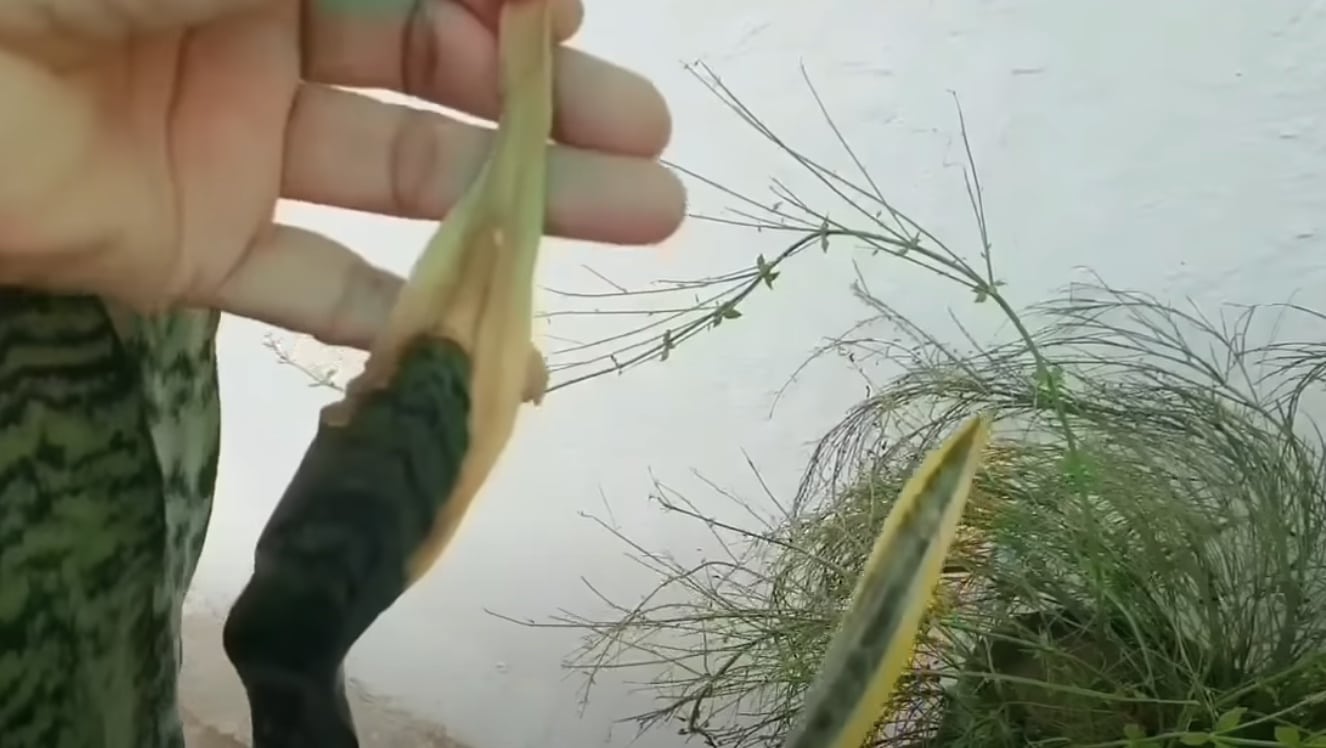The bane of many plant owners’ existence is the dreaded root rot. The lovely snake plant is no exception. Although root rot can be a hassle to deal with, you can remedy the issue with the proper steps. This article will answer the question, ‘what causes root rot in a snake plant?’
Keep reading to learn how to identify, fix, and prevent root rot in your snake plant.
Main Causes of Root Rot in a Snake Plant
The first step to identifying and treating root rot is to learn how root rot happens. Simply put, water is the culprit behind all cases of root rot. So whether you’ve overwatered your plant or prevented proper drainage, water should be your focus when addressing root rot.
The most common reasons your snake plant’s roots will rot are due to:
- Too much water
- Poor drainage
- Fungus
- Oversized pot
- Cold temperatures
Signs of Root Rot
Unfortunately, since root rot begins beneath the soil, you likely won’t notice an issue until it’s reached the leaves. If your leaves have a squishy texture, a yellow hue, or have started to wilt, you probably have root rot. To confirm root rot, brush away some soil and check for damage.
How To Avoid Root Rot
The top method for avoiding root rot is to water your plant correctly. However, there are other precautions you can take to ensure your plant doesn’t rot.
Use the Right Pots
Pots with sufficient drainage are vital to preventing snake plant root rot. A pot with a solid bottom will hold water longer, leading to mold, fungus, and too much moisture on your roots.
In addition to the right pot, you also need to prep your pot correctly. Even if your pot is new, take a few minutes to disinfect your pot. Disinfecting will eliminate any lingering fungi that could damage your snake plant.
Use the Right Soil
Next, you should choose the best soil for your snake plant. A properly draining pot is crucial, but so is well-drained soil. You want a succulent-friendly potting mix to ensure your plant gets the proper nutrients.
When you pot your plant, don’t overpack the soil because it’ll inhibit drainage. Instead, pat the soil down, but don’t press. Then, repot your plant every couple of years to remove the dirt that’s compacted over time.
Don’t Overwater
It might be tempting to water your snake plant two or more times a week, but hold that watering can. Instead, water your plant twice a month in the summer and once or twice a month in the winter.
Also, be sure to let your soil dry before watering again. If your soil looks damp or feels wet to the touch, it’s not time to water your snake plant yet. Humidity and temperature play a significant part in how quickly the soil dries, so always test it first.
How To Fix Snake Plant Root Rot
Unfortunately, preventative methods don’t always work. So if your snake plant came down with a case of root rot, here’s how to fix it.
- Remove your plant from the pot, gently clean the roots, and discard the soil.
- Disinfect the old pot with a bleach solution and find a new pot for your plant.
- Using clean scissors, trim away the infected roots and leaves.
- Add a layer of stones to your pot, then your potting soil.
- Add your plant, cover it with fresh soil, then water it.
Wrapping Up
Snake plant root rot is a frustrating issue many plant owners have dealt with. However, with the proper precautions, you’ll be able to easily prevent and repair root rot. Follow the steps listed in this article to ensure your snake plant lives a long, healthy life.

